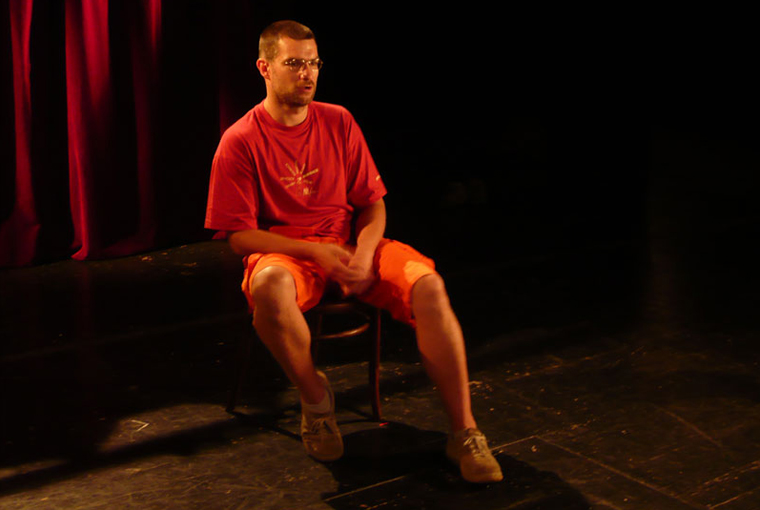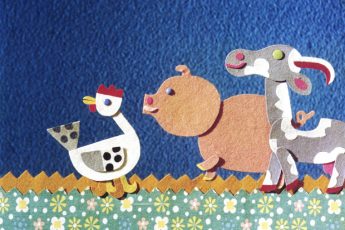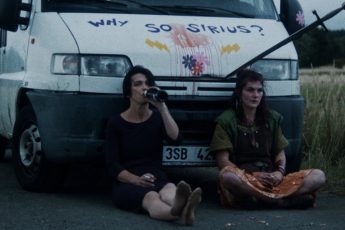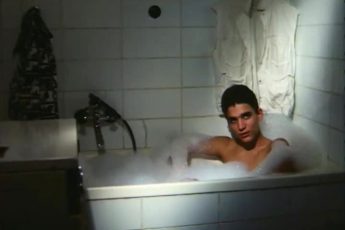
We met Czech animation filmmaker Aurel Klimt at Karlovy Vary, where he presented his musical stop-motion feature about Laika, the first living creature to orbit the earth. Klimt speaks about the making of his film, and the ethical ideas behind it.
Could you start by telling us where you first got the idea for your project?
My close friend Martin Velíšek and I had just finished our graduation project The Magic Bell when the Minor theater in Prague, which is the major local puppet theater, asked us to turn it into a show. So we did, which led to another offer for another show. We wanted to have animals and space involved.
That show did not materialize but two years on the actress from the theater in Prague came to me and told me they had a grant to create a show for children aged between 11 and 15. So I wrote a story called “Laika, Chen and Gagarin”.
Chen was the first Chinese monkey in space. That was in 2002, when the Chinese space program was still something you could ridicule and make fun of, but by the time I finished it, it was more like doing propaganda for the Chinese regime, so I left it out completely. I wrote it in six months, and of course part of it is grounded in reality, and part is fantasy. The central theme is the relationship between humans and other living creatures – not just animals on earth, but also in space.
What was it like to make a critical film about Russia as a Czech?
Well there’s the character of Neil Knockout [a stupid American astronaut]. So it’s not only meant to be a criticism of Russia, it’s really about the relationship we as humans have with animals. When the Velvet Revolution came to the country I was just finishing high school so unfortunately I had enough time in my life to be impacted by the propaganda. And astronauts and outer space featured very heavily in that propaganda which is why I was able to put it in the film. I think that for someone from a small country it was easy for me to make this film. I don’t think anyone from the US or Russia could have made it. You cannot make fun of the space programs in those countries because it is often presented as the flagship of technological advancement.
Does your film leave any hope for humanity?
The film calls on humanity to slow down a little bit and to make do with less. But it’s not a dogma for me, I know that there probably won’t be any happy ending for this. Some people understood the film as pushing a vegetarian agenda. Personally I’m not a vegetarian. I just want people to think more about where food comes from and how we treat other living creatures.
Do you have a dog?
I do have a dog! The way Laika looks is based on my first dog, which was a cross-breed between a husky and a mongrel.
Who did the music for your film?
The songs were created for the music show. Both the music and the lyrics were created by Miroslav Vaněk, but to have music in film, songs are not enough, you really need big scenic film music to accompany the image. And because this composer didn’t have experience doing this, we had to look for somebody else. It was a very long search because we had to find someone who would be a good match with the songs. In the end we found him but the first author was a little offended and so in the final credits the first author of the songs is listed under a different name.
How did you create the animation?
All the local conditions are different to what you’d find in the UK or the US, where for a feature film you’d have 30 to 50 stages working simultaneously, an army of people to do it. Here there were only five of us for the main part of the production. It took us six years because of that.
There are two approaches to animation. Usually you define the key stages of the project and then you animate between them. But stop motion is done in another way, it is created directly under the camera. What I love about it is that there’s still the contact of the human hands with the puppets and you can tell that it is there. It’s not exactly in real time because one second in the film usually takes an hour to make, but then that allows you to improvise and play around, which is fun, too. When the animator sees that the puppets have a nice angle or relationship, then they can use it immediately, it’s not fixed in advance. There is no precise planning or exact decisions taken beforehand. You have the freedom to act.
Currently technology allows me as a director to come and watch what the animator has just done, and give them advice on the spot. Before this was not possible because you had to wait for a month before the finished stuff came out of the lab, and if you realized there was a mistake one month later then it had to be redone.
What will your next project be about?
I’m currently working on an adaptation of the novel War with the Salamanders by Karel Čapek. It’s a metaphor because the salamanders in the book are of a different ethnicity and I make a link between the novel and today’s immigration crisis. It’s similar to my central theme, which is our relationship with people who are different. The title mentions war, but it’s not exactly a war, it’s more of a civilization shift. In the book people help the salamanders develop and they help them to a better life because of their own economic interests. Then the salamanders take over and invade the entire planet. I’d like to do something similar to Karel Zeman, to create live action and tricks and animation.
Thank you for the interview.




Leave a Comment